Stroud Sewerage Strategy Project: Part 1 (2022)
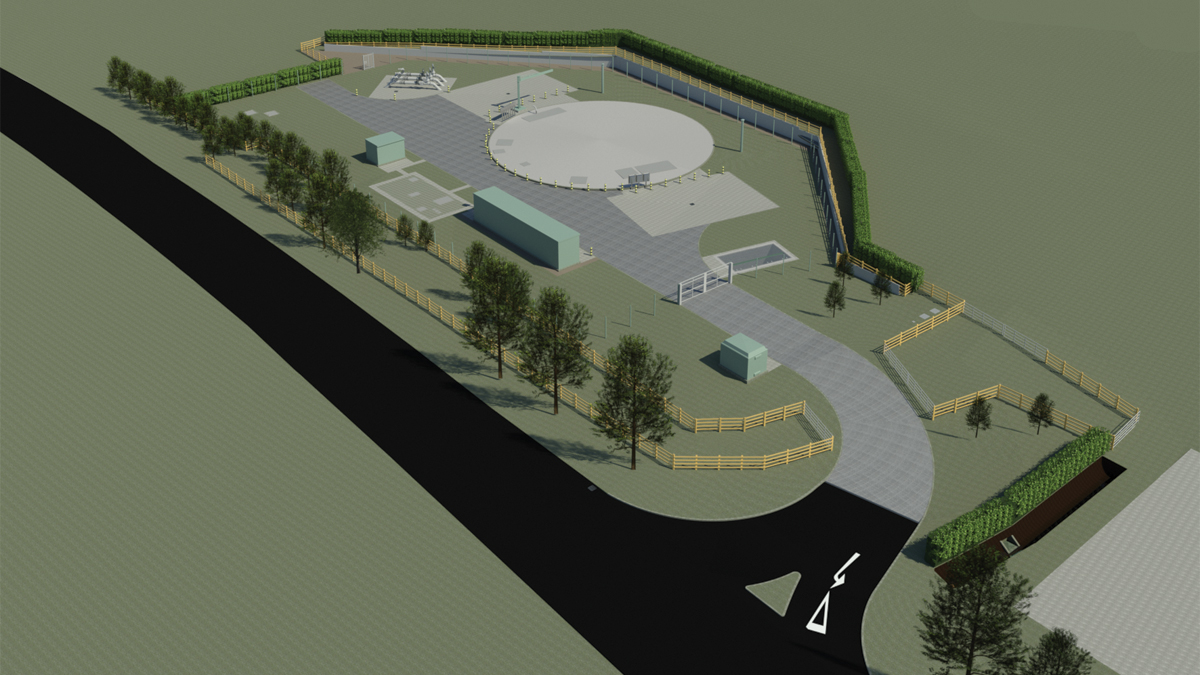
3D render of CSO operational site - Courtesy of Galliford Try
Stroud is located in Gloucestershire near the southern boundary of the Severn Trent region between Gloucester and Bristol. The catchment is a mix of urban and rural areas and has a population of circa 67,000. The sewerage network is primarily a combined network with Wallbridge Combined Sewer Overflow (CSO) being a key asset close to the town centre. The catchment is served by Stanley Downton WwTW. The main river through the catchment is the River Frome. Stroud has a history of sewer flooding along its trunk sewer dating back to the 1980s. The existing trunk sewer follows the route of the River Frome and during periods of heavy rain and storm events floods either directly to the River Frome, or to public open space or fields with internal and external curtilage flooding close to Stroud town centre.
Understanding the problem
To improve understanding of the issues in Stroud, Severn Trent engaged with a wide range of customers across the catchment who reported issues and delivered hundreds of flooding questionnaires. This helped to build evidence of issues in addition to the historic reported incidents.
Several key flooding locations were known to be in areas away from the general public and adjacent to the river. To help understand the frequency and severity of this flooding, long term incident prevention monitors were installed in the sewer at key locations.
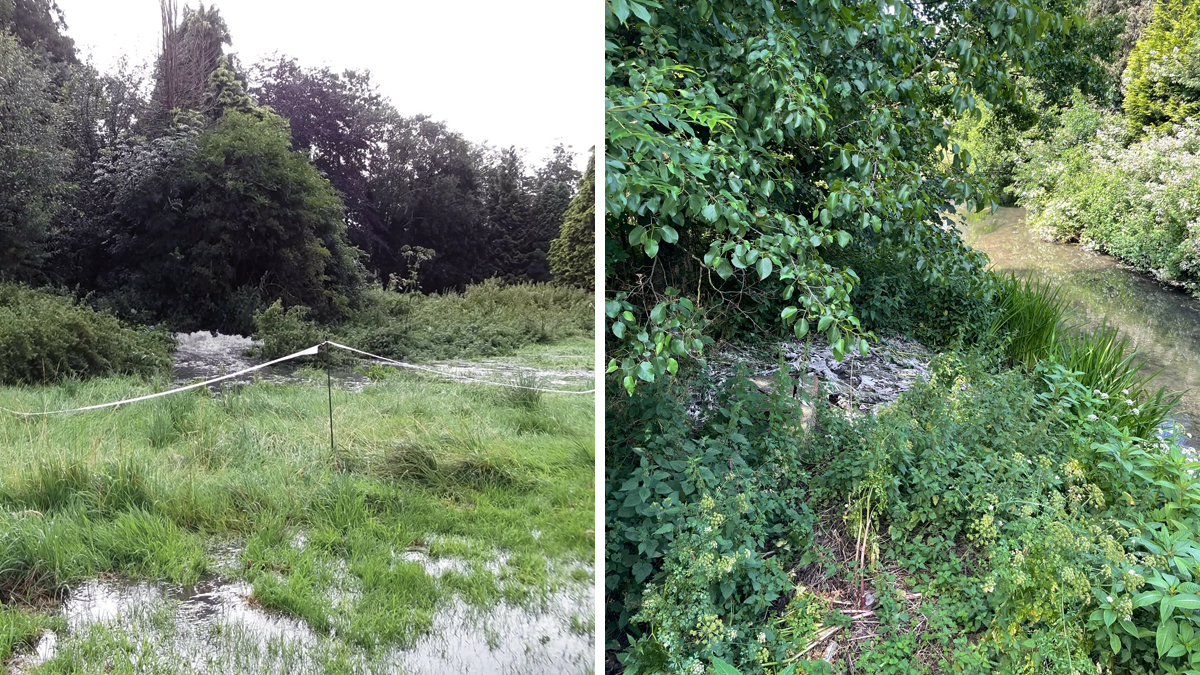
Photographs of a sewer flooding incident in 2012 – Courtesy of Severn Trent
These monitors were able to alert Severn Trent of a potential flooding incident allowing operations teams to respond to incidents and collate evidence of flooding frequency.
To understand the cause of the sewer flooding, a verified hydraulic model was required. The existing model for the catchment was out of date and insufficiently detailed to accurately represent system performance. Severn Trent worked with Richard Allitt Associates to improve the model. Surveys were organised which included contributing area surveys to confirm connectivity of roofs and roads, asset surveys including CSOs, pumping stations and manholes, and a flow survey including 91 monitors in the sewer network and 23 rain gauges across the catchment. All monitors were installed for a 3-month period to observe flows in dry and wet weather. To help identify areas of infiltration and understand how the catchment response to rainfall changed throughout the year, 25 key monitors were installed for 12 months.
The hydraulic model was updated in Infoworks ICM to incorporate the survey data and then utilise the flow information to verify the hydraulic model performance against observed data.
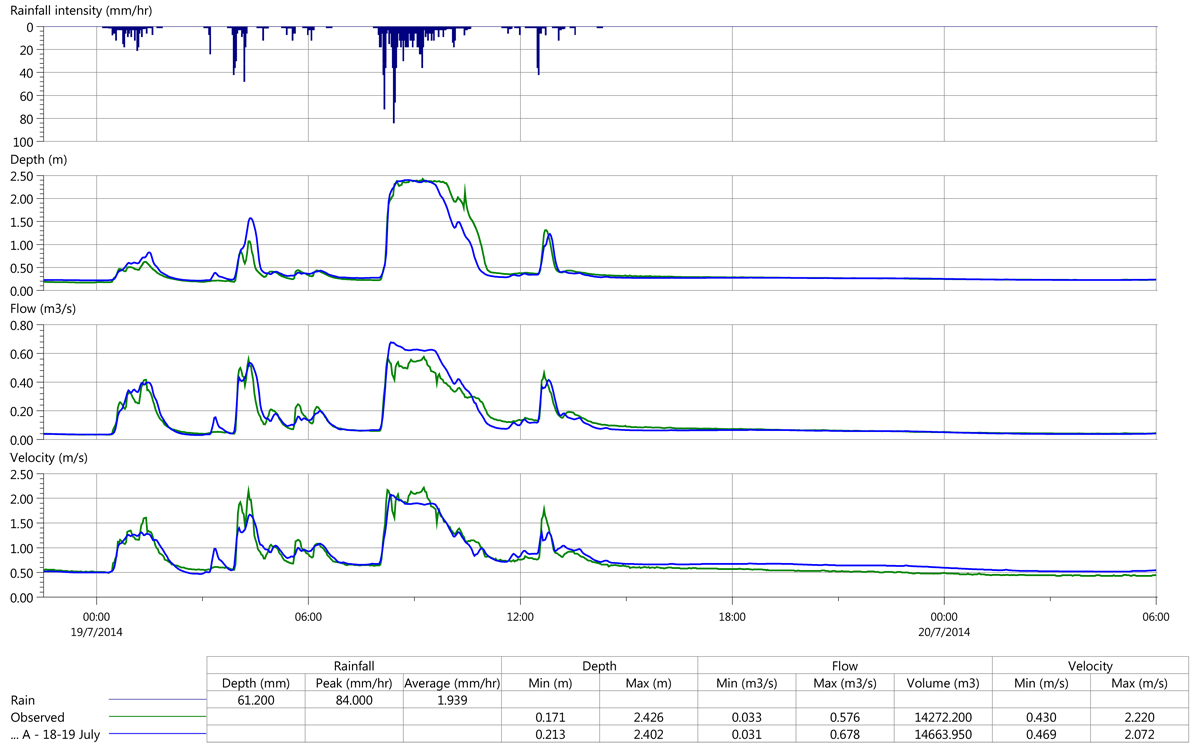
Model verification graph showing overserved data vs model predicted data during an observed rainfall event – Courtesy of Severn Trent
Once the model was verified, performance predictions checked against historical events and independently audited, it could then be used to assess the root cause of each issue and predict how the catchment performance will change with growth and climate change. The model, survey, monitor and customer information identified three key areas of sewer flooding on the trunk sewer and issues with Wallbridge CSO. The cause of flooding was a combination of the design of the trunk sewer in Stroud (built in the 1960s), urban creep (increases in impermeable area i.e. extensions, paving driveways, etc) and growth.
Feasibility & outline design
Surface water separation: The project team prioritised removal of surface water from the combined sewer system to reduce the risk of sewer flooding. Using asset data, information from Gloucestershire County Council, site walkovers and survey data we identified areas of potential for separation. Further surveys were commissioned to confirm the potential for separation, tracing unrecorded sewer systems, locating gullies and dye testing gullies and properties to confirm connectivity.
The surveys demonstrated that an impermeable area of over 4 hectares drained into the combined sewer system, which could be removed. An option was developed to install a new surface water sewer system, disconnecting surface water systems and gullies from the combined sewer. This reduced the peak storm flow rate by over 170 l/s and would eventually help reduce the size of storage required in the proposed solution by over 1,000m3.
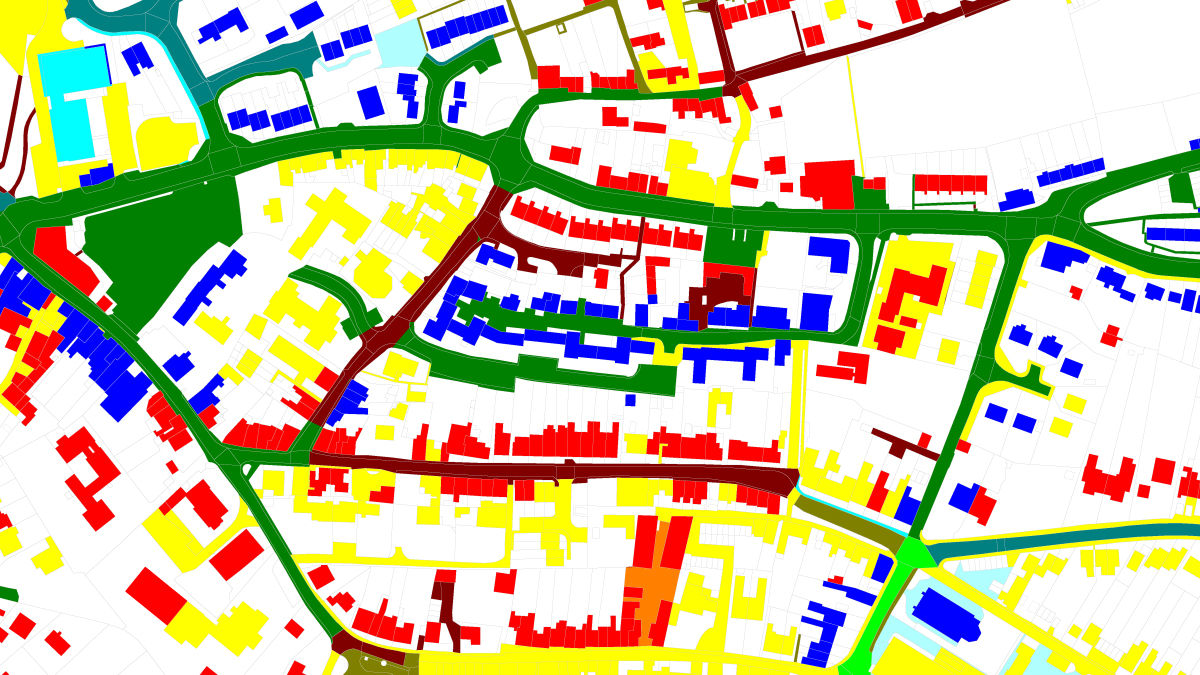
Results of the impermeable area survey – Courtesy of Severn Trent
Sewer infiltration reduction: Through surveys a number of infiltration defects were identified in our network. This infiltration of groundwater occurred through joints, connections or structural defects due to the age of the sewer system. Removal of the identified infiltration defects through manhole sealing, infiltration sewer lining or revisions to the proposed sewer network removed over 300m3 per day of infiltration, helping to reduce future spills and operational costs, by eliminating the need to pump and treat groundwater.
Trunk sewer & CSO: Whilst opportunities to remove surface water and large infiltration defects has helped reduce the risk of sewer flooding, improvements to the capacity of the trunk sewer were still required. A solution was developed to construct a 2nd trunk sewer system in Stroud, providing additional capacity to reduce the risk of sewer flooding and moving the existing Wallbridge CSO downstream. To ensure no increase in consented spills and to accommodate the flooding volumes, storage was required at the new CSO. This volume was mitigated through the separation, infiltration reduction and other works, but totalled 7,326m3.
To move the existing Wallbridge CSO, Severn Trent engaged with the Environment Agency to develop the proposal. It was identified early on that to move the CSO, a water quality model would be required to assess the impact on water quality in the receiving River Frome. Severn Trent engaged the services of WRc to undertake a water quality study using SIMPOL ICM software. This included use of historical information and installing rain gauges, river monitors and undertaking river sampling. The water quality model was used to assess impact on ammonia, biological oxygen demand (BOD) and compliance against Water Framework Directive and Fundamental Intermittent Standards. The water quality study demonstrated no detriment to water quality from the proposals.
Feasibility: A location for the new CSO and route for the proposed pipelines were developed during the feasibility stage. The routes, locations and proposed construction methodology were selected to minimise or eliminate risks from other services, disruption to residents & businesses, habitat and ecology and ground risks such as landfill and buried structures. Due to depth and land use, most of the trunk sewer was proposed to be constructed by pipejacking. Landowners and affected stakeholders were consulted and a business case prepared for approval.
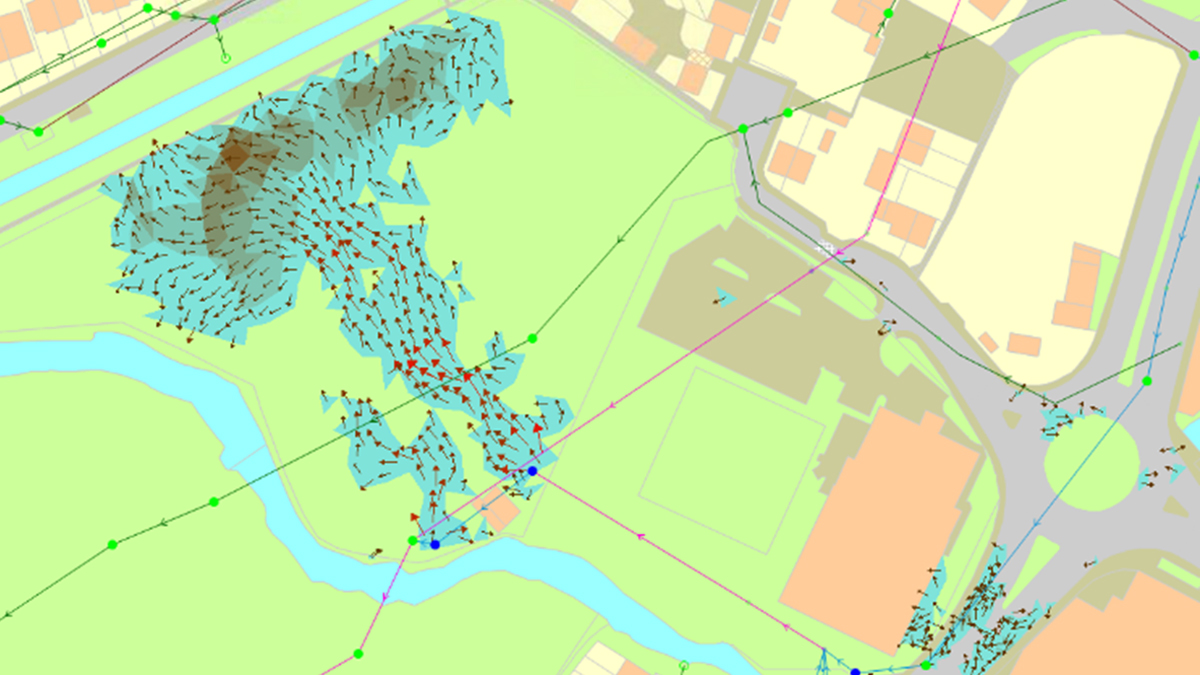
2D flooding analysis in Infoworks ICM – Courtesy of Severn Trent
Outline design: To improve confidence in the solution, costs and reduce risk pre-contract award Severn Trent undertook the outline design as part of the AMP7 operating model. Key activities included:
- Topographical, ground penetrating radar and electro-location survey.
- Boreholes and trial holes to inform on ground conditions.
- Interpretative report for pipe-jacking and shafts.
- Land purchase negotiations.
- Detailed ecological surveys including water voles, badgers, white clawed crayfish.
- Mechanical and electrical outline design for CSO and shaft tank.
- Civils outline design of CSO and shaft tank.
- Plan and longitudinal sections for proposed sewers.
- Service diversion quotations.
- Pre-application planning advice.
- Activity schedule & contract.
The outline design process reduced the risk in the design by improving knowledge of ground conditions, identifying and obtaining costs for key service diversions, identifying constraints such as common land and protected species and progressing land negotiations. This produced a detailed scope for tendering stage and increased confidence in cost and risk.
Project scope & contract award
The project scope is made up of five sections:
- Surface water separation: Separation of 3.88 hectares of impermeable area from the combined sewer network by installing new and modifying existing surface water sewers allowing the separated surface water to discharge to existing outfalls.
- Infiltration reduction: Sewer rehabilitation and manhole sealing to reduce ground water induced infiltration.
- Trunk sewer improvements: 3.65km of new trunk sewer in the range 750mm to 1500mm diameter in both open cut & tunnelled sections with abandonment and demolition of Wallbridge CSO.
- Combined sewer overflow & storage: CSO incorporating mechanical screens, 7,326m3 storage with river discharge pumps and associated outfall structure and control philosophy linked to Stanley Downton WwTW.
- Stanley Downton WwTW: Storm tank return system and controls.
The project was one of the first wastewater infrastructure projects to be awarded under Severn Trent’s new AMP7 operating model and recently negotiated framework agreements.
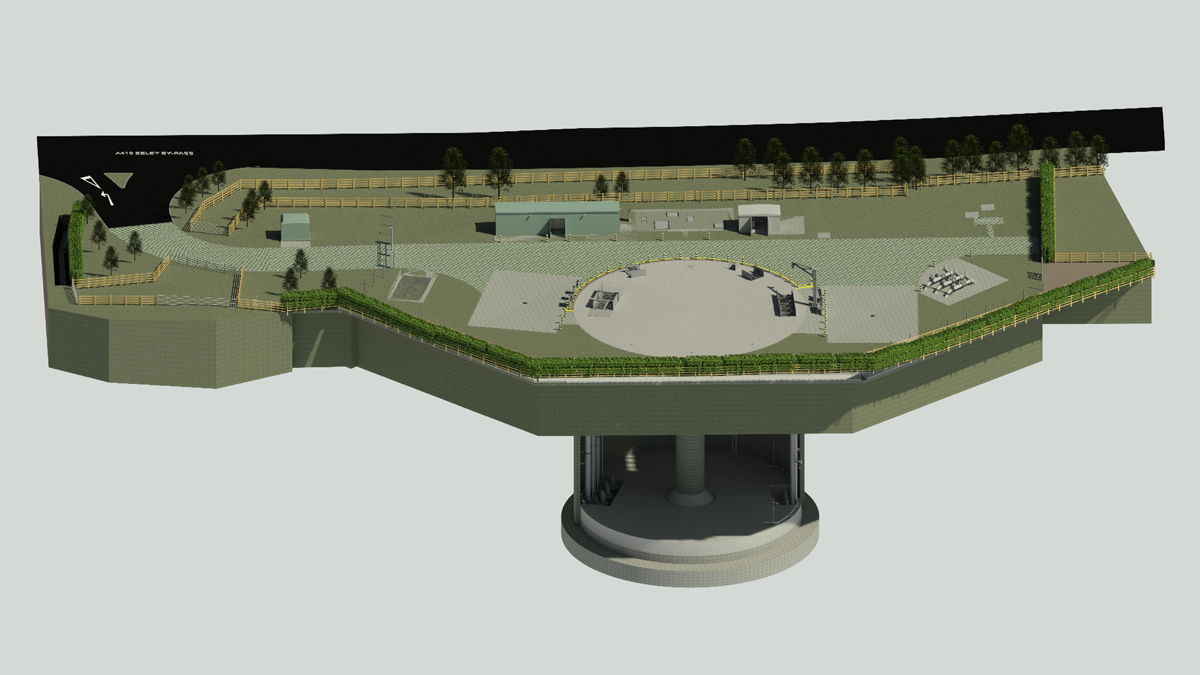
Render of CSO shaft and main site – Courtesy of Galliford Try
Design opportunities
The new AMP7 operating model places all design responsibility (whether or not that design was prepared by the client or the contractor) onto the Lot 1 Design & Build Contractor. Once Galliford Try were awarded the £21.7m design and build contract, an extensive period of design verification and value engineering was undertaken which identified 31 key design opportunities to the value of £717,000. The Galliford Try design team set about delivering these efficiencies whilst ensuring the outputs remained within the contract scope. The largest five opportunities were:
- Detailed assessment of structural design of buried pipeline calculations (BS 1295 and BS 9295) to establish minimum bed and surround requirements and optimise pipe material choice for 1.7km of open cut 750mm and 1500mm diameter pipes.
- Optimisation of fixed lifting equipment at the CSO site by providing a swing jib instead of fixed gantries which reduces the complexity of the loadings on the CSO shaft cover slab. Permanent fixed lifting equipment was demonstrated as not being required for the river discharge pumps following ALM review in line with Severn Trent standards.
- The CSO screen was changed to a Longwood Engineering Stormguard 450. Galliford Try commissioned a 1:5 scale model at Framatome BHR’s hydraulic laboratories to demonstrate that 2,600 l/s could be screened without exceeding the allowable TWL in the catchment.
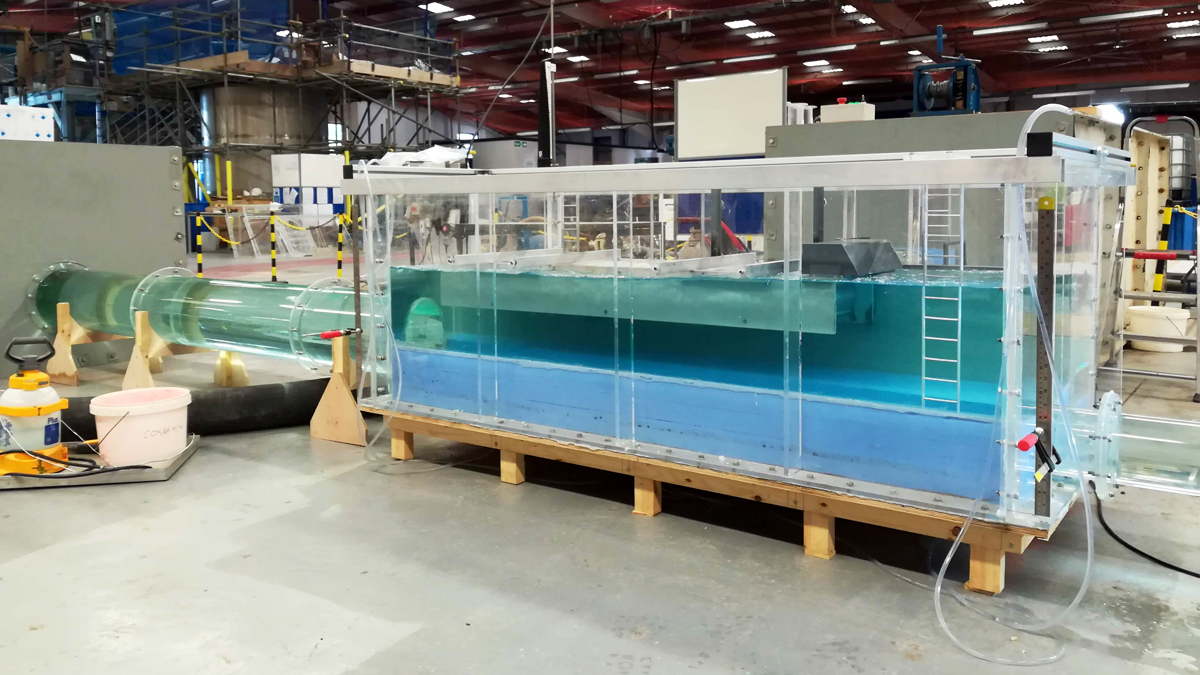
Physical model of CSO chamber and screen – Courtesy of Severn Trent
- Rationalisation of the 1.8km tunnel route led to the removal of a 5m diameter drive shaft and the removal of an additional tunnelled crossing under the A419.
- Rising mains at the CSO site were brought above ground, which eliminated the need for valve and flow meter chambers as well as helping to reduce the number of confined spaces for the operations team.
Stroud Sewerage Strategy: Supply chain – key participants
- Client: Severn Trent
- Design & build contractor: Galliford Try
- Hydraulic model: Richard Allitt Associates
- Ecology/environmental consultants: RammSanderson Ecology
- Land & Planning Agents: Dalcour Maclaren
- Topographical Surveys: Geomap Ltd
- Ground investigation: Grange Geo Consulting
- Hydraulic model: Innovyze (Infoworks ICM)
- Physical model: Framatome BHR Group
- Shafts & pipejacking: Active Tunnelling
- Tunnel design: BSP Consulting
- Traffic management: Amberon Ltd
- Remediation & Asbestos Management: Churngold Construction
- Water main diversions: Heartland Pipelines
- Sewer lining: Colus Ltd
- Open-cut pipelines: LCS Groundworks Ltd
- Open-cut pipes: Marshalls CPM
- Electrical installation & MCC: Cema Ltd
- DI pipework: Electrosteel Castings (UK) Ltd
- Jacking pipes: FP McCann Ltd
- Shaft rings: Macrete (Ireland) Ltd
- Washwater pumps: KGN Pillinger
- Lifting equipment: T Allen Engineering Services
- Submersible pumps: Xylem Water Solutions
- CSO Screens: Longwood Engineering Co Ltd
- Fencing & tree clearance: Landscape Maintenance Services
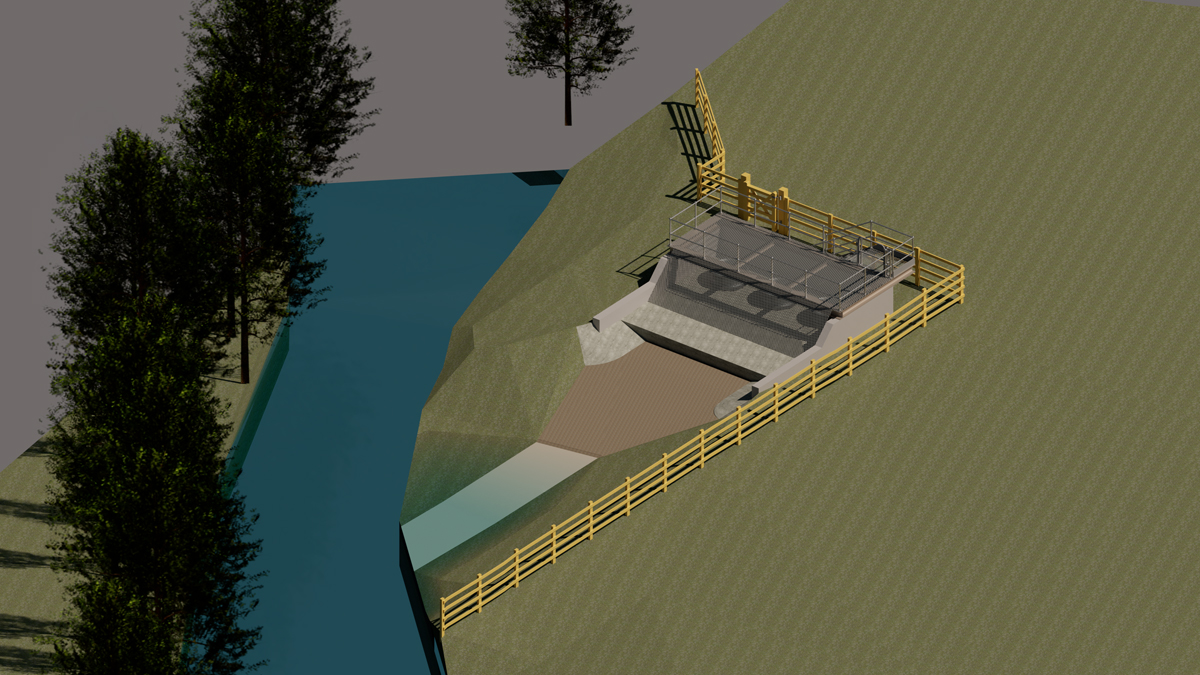
River Frome headwall render – Courtesy of Galliford Try
Risk management
The delivery of the Stroud Sewerage Strategy carries a large amount of risk to Galliford Try. With many work interfaces, buried assets, stakeholders and ecology to deal with over the 6.5km of pipework, the team methodically developed plans to ensure the project could be delivered within the contract programme and included:
- Undertaking a further 22 trial holes and 14 cable percussive and rotary core boreholes to confirm data from GPR surveys and verify the ground conditions along the tunnel route.
- Agreeing access and serving 144 land entry notices under S159 Water Industry Act to cover all working areas on the project. Distribution of over 2,000 letters, creation of a virtual room, hosting two community drop in sessions and releasing two press articles in local newspapers.
- Submitting a pre-planning application to understand local constraints and develop the main CSO operational site’s designs following feedback from key consultees.
- Undertaking further ecology work including badger sett monitoring and closures, newt habitat suitability and DNA testing, dormouse nut searches, white clawed crayfish and otter surveys as well as licensed water vole relocation work.
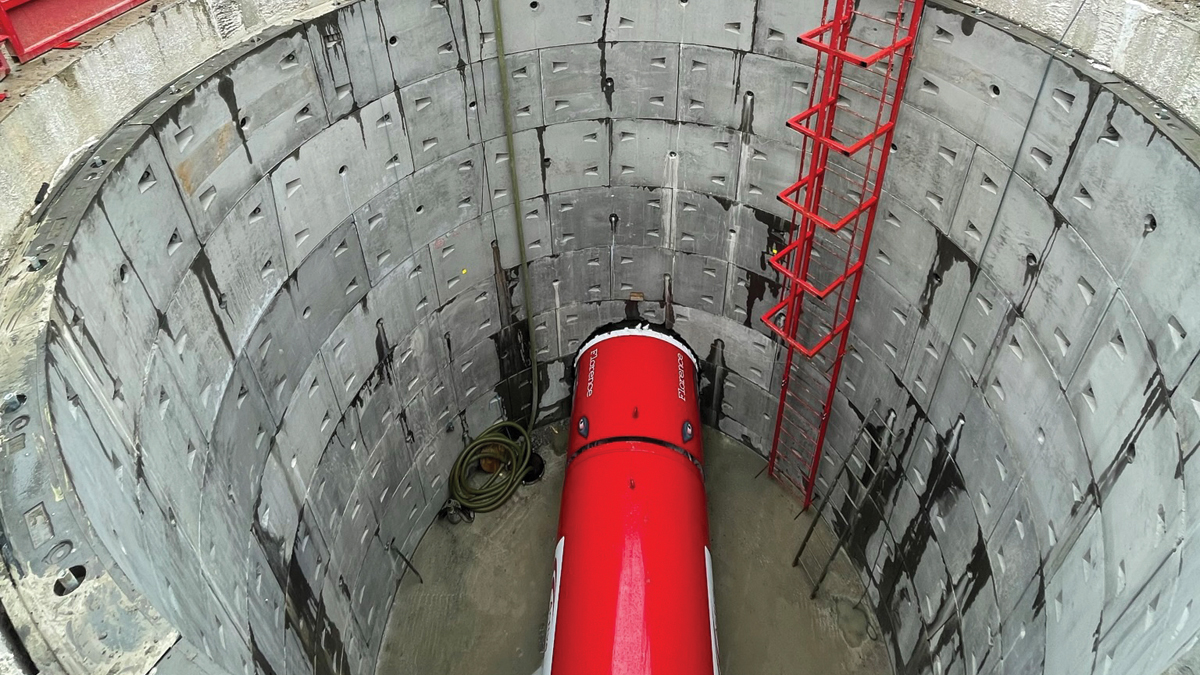
TBM launch at Wallbridge – Courtesy of Galliford Try
Construction
Construction started in March 2022 with tunnel drive shafts, reception shafts and multiple tunnel drives in progress. The next major milestone will be taking possession of the land to commence construction of the CSO operational site and associated assets. A construction focussed case study will follow in future editions of UK Water Projects.








